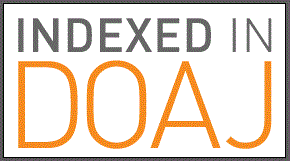Keywords
quantitative literacy, numeracy, measurement, undergraduate education
Abstract
Development, psychometric testing, and the results of the administration of a quantitative literacy (QL) assessment to undergraduate students are described. Three forms were developed covering a wide range of skills, contexts, and quantitative information presentation formats. Following item generation and revision based on preliminary testing and cognitive interviewing, a total of 3,701 consented undergraduate students at Michigan State University completed one of the three forms. Two of the forms contained 14 multiple-choice items, and one form contained 17 multiple-choice items. All forms were completed by students in less than 30 minutes. Evidence of validity and reliability were obtained for the three forms. Unidimensionality of the underlying construct was established using confirmatory factor analysis. Correlations with ACT and university mathematics placement test ranged from .41 to .67, and correlations with the Lipkus numeracy scale ranged from .40 to .45. Cronbach’s alphas for the three forms were near or exceeded .70. Comparison of student QL performance according to demographic characteristics revealed gender differences, with males scoring higher than females. These gender differences persisted even after controlling for ACT composite scores. Race/ethnicity differences were significant in unadjusted analysis, but did not persist over and above ACT composite scores in the adjusted analyses. The three newly developed forms of QL assessment will need to be further tested in the future to determine if they capture the effects of interventions that aim to improve QL.
DOI
http://dx.doi.org/10.5038/1936-4660.4.2.5
Recommended Citation
Sikorskii, Alla, Vince Melfi, Dennis Gilliland, Jennifer Kaplan, and Suzie Ahn. "Quantitative Literacy at Michigan State University, 1: Development and Initial Evaluation of the Assessment." Numeracy 4, Iss. 2 (2011): Article 5. DOI: http://dx.doi.org/10.5038/1936-4660.4.2.5
Creative Commons License

This work is licensed under a Creative Commons Attribution-Noncommercial 4.0 License
Assessment Instrument, three forms

